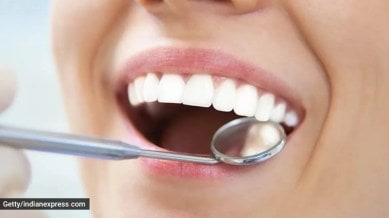📣 For more lifestyle news, click here to join our WhatsApp Channel and also follow us on Instagram
If you just got a wisdom tooth extracted, here’s what you must (and not) do for 24-48 hours
Wisdom tooth is the third molar, the last to erupt

Dental health and hygiene must never be ignored. So today, we decided to talk about wisdom tooth extraction—a painful experience. If you have been stalling one or just got a tooth extracted, here is all you need to know about the procedure and the correct way to recover.
Dr Gunita Singh, B.D.S., M.D. Dental Lasers explained that the wisdom tooth is the third molar, the last to erupt. “These are four in number and one in each quadrant of the oral cavity. Eruption of wisdom teeth can be one of the most painful experiences for a few individuals,” said Dr Singh.
As humans have evolved, the jaw sizes are becoming narrower and narrower. “As a result, we have no space left for the third molars. So either they strike on the bone or adjacent teeth. In both cases, it’s excruciating, and there is a chance of damaging the adjoining structure. So, getting the tooth extracted/removed as soon as it starts bothering you is advised,” said Dr Singh.
In cases where orthodontic treatment such as braces is needed, removal of wisdom teeth may be recommended to prevent them from causing misalignment of straightened teeth, said Dr Afsar Mulla, consultant maxillofacial prosthodontist and implantologist, Manipal Hospital, Goa. “Dentists refer to an impacted wisdom tooth as one that has not emerged through the gums or is unable to do so,” said Dr Mulla.
Even if a wisdom tooth does push through the gum but is improperly positioned, it can pose challenges for effective oral hygiene practices like brushing and flossing. “This increases the risk of trapped food particles, bacterial growth, tooth decay, and gum disease. If a wisdom tooth has emerged through the gums, your dentist will closely monitor its condition,” said Dr Mulla.
Post extraction guide
Bleeding: It is advised to bite with moderate pressure on the gauze pad placed in your mouth for 30 minutes. “Some oozing may occur for about 24 hours. Avoid spitting and excessive physical activity, as this tends to increase and prolong bleeding. Do not lay flat. Keep your head elevated above your heart,” said Dr Singh.
Pain: Take the pain medication prescribed within one hour to prevent post-extraction discomfort.
Oral hygiene: It is advised not to rinse the extraction site for 24 hours. “Afterwards, rinse the area with warm salt water (one teaspoon of salt in a glass of warm water) three times daily. Continue to do this for a week,” said Dr Singh.
Diet: Avoid eating on the side of the extraction for three or four days. “Try to maintain a normal diet. Chew on the opposite side and drink plenty of fluids. Also, avoid any carbonated beverages and alcohol for 24 hours,” said Dr Singh.
Swelling and discolouration: It is expected to have some swelling and possibly discolouration after a complicated extraction. “The swelling will last about three days. To minimise this problem, apply an ice pack for fifteen minutes. Keep alternating for eight hours. On the second day, warm, moist heat is beneficial,” said Dr Singh.
Sutures: Some methods of tooth removal require sutures (stitches). “If your sutures require removal, you will be given an appointment,” said Dr Singh.
Smoking: Smoking is to be avoided for the first 48 hours.
Fever concern: A slight fever may occur for 24–48 hours; contact the dentist if it persists, said Dr Mulla.
DISCLAIMER: This article is based on information from the public domain and/or the experts we spoke to. Always consult your health practitioner before starting any routine.
📣 For more lifestyle news, click here to join our WhatsApp Channel and also follow us on Instagram